#glenn research center
Text
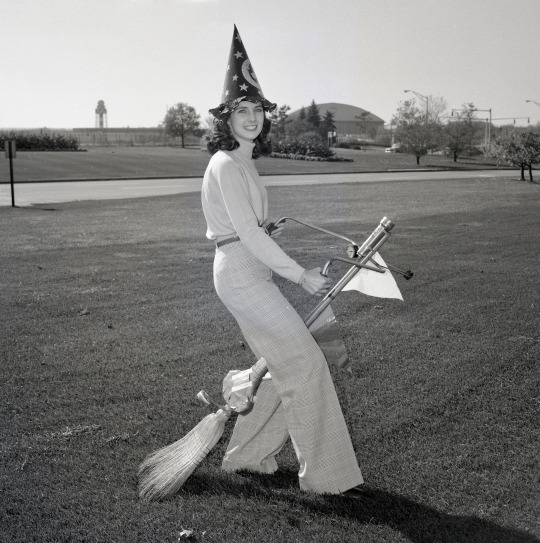
Halloween at NASA's Lewis Research Center in Cleveland, 1977.
#witch#nasa#space#history#halloween#cleveland#glenn research center#1970s#glen plaid#plaid pants#70s aesthetic#70s fashion
1K notes
·
View notes
Text

1966 energy conversion devices by NASA/Glenn research center via archive.org
470 notes
·
View notes
Text
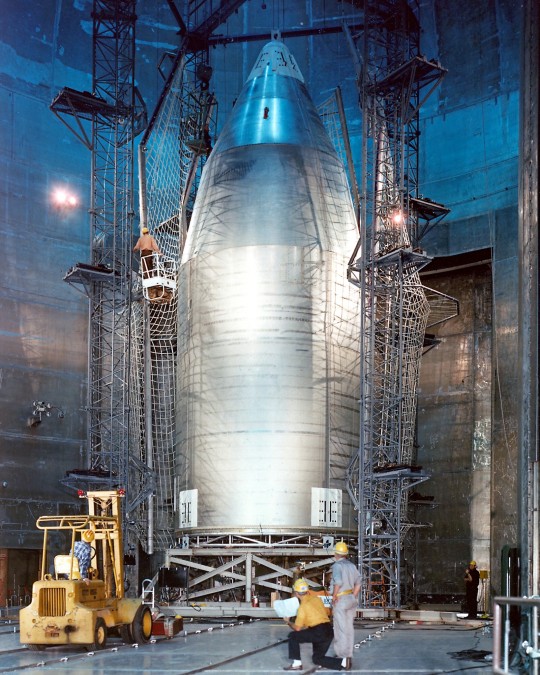
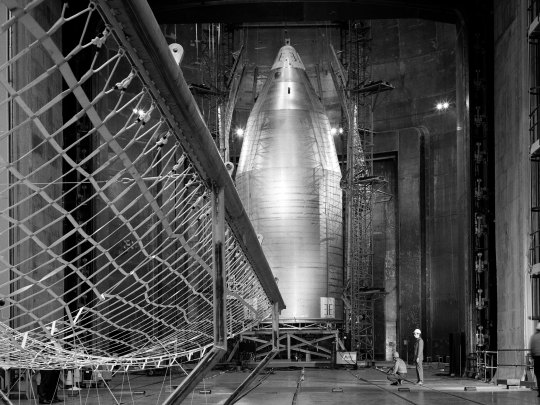
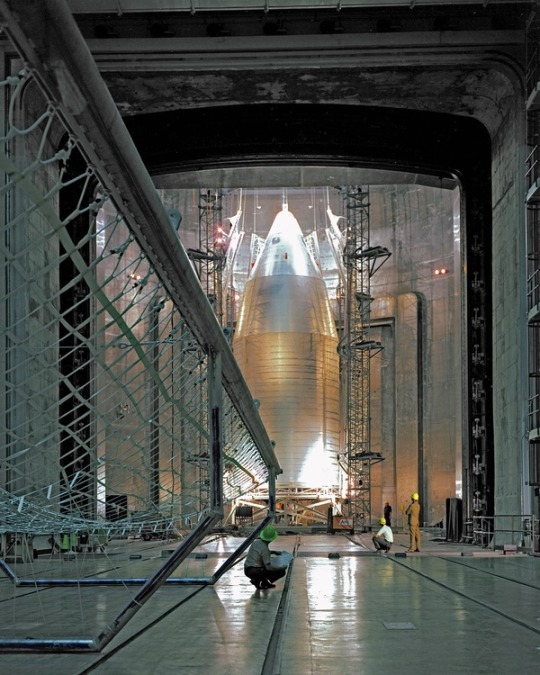
"Skylab Shroud in the Space Power Facility
The 56-foot tall, 24,400-pound Skylab shroud installed in the Space Power Facility’s vacuum chamber at the National Aeronautics and Space Administration’s (NASA) Plum Brook Station. The Space Power Facility, which began operations in 1969, is the largest high vacuum chamber ever built. The chamber is 100 feet in diameter and 120 feet high. It can produce a vacuum deep enough to simulate the conditions at 300 miles altitude. The Space Power Facility was originally designed to test nuclear-power sources for spacecraft during long durations in a space atmosphere, but it was never used for that purpose. Payload shrouds are aerodynamic fairings to protect the payload during launch and ascent to orbit. The Skylab mission utilized the largest shroud ever attempted. Unlike previous launches, the shroud would not be jettisoned until the spacecraft reached orbit. NASA engineers designed these tests to verify the dynamics of the jettison motion in a simulated space environment. Fifty-four runs and three full-scale jettison tests were conducted from mid-September 1970 to June 1971. The shroud behaved as its designers intended, the detonators all fired, and early design issues were remedied by the final test. The Space Power Facility continues to operate today. The facility can sustain a high vacuum; simulate solar radiation via a 4-megawatt quartz heat lamp array, solar spectrum by a 400-kilowatt arc lamp, and cold environments."
Date: December 1, 1970
NASA ID: GPN-2000-001462, .GRC-1970-C-03691, 4588H
#Skylab Orbital Workshop#Skylab OWS#Skylab#Skylab I#Skylab 1#SL-1#Space Station#Saturn V#Saturn INT-21#SA-513#Rocket#NASA#Apollo Program#Apollo Applications Program#Plum Brook Station#Glenn Research Center#Cleveland#Ohio#December#1970#construction#my post
33 notes
·
View notes
Text
In case realism is something you can't live without
Humanoids with wings - wing sizing/ratio to body
Lift Coefficient
Lift Equation
#creative writing#writing#writers of tumblr#novel writing#story writing#writeblr#writing community#writers on tumblr#writerblr#wings#birds#wildlife#mythical creatures#mythology#myth#classical mythology#math#mathematics#nasa#glenn research center
1 note
·
View note
Photo

Engineers making a check on body of a model of a supersonic aircraft before a test run in the 10ft x 10ft Supersonic Wind Tunnel test section.
Lewis Flight Propulsion Laboratory
Brook Park, OH 7/31/1957
0 notes
Text
The European Service Module: A conversation with NASA's Jim Withrow
The European Service Module: A conversation with NASA’s Jim Withrow
The Artemis 1 Space Launch System rolls to Launch Pad 39B on March 17, 2022. Credit: Scott Johnson / Spaceflight Insider
KENNEDY SPACE CENTER, Fla. — In the lead-up to the Aug. 29, 2022, Artemis 1 Space Launch System (SLS) launch attempt, Spaceflight Insider had the opportunity to speak with a number of people involved in its design, construction, assembly, and flight. One of those people is Jim…

View On WordPress
#Aerojet Rocketdyne#Airbus#Artemis 1#Artemis program#ESA#European Space Agency#Glenn Research Center#Human Space Flight#Kennedy Space Center#Launch Pad 39B#NASA#Orion#Space Launch System#The Range
1 note
·
View note
Text
Newest Astronaut Candidate Class Visits NASAs Glenn Research Center
Members of NASA’s 2021 astronaut candidate class visited NASA’s Glenn Research Center in Cleveland on Oct. 5 and 6 to learn more about the scope of work at the center. NASA Glenn’s world-class facilities and expertise in power, propulsion, and communications are crucial to advancing the agency’s Artemis program. The astronaut candidates, accompanied by Shannon […]
from NASA https://ift.tt/hSIljFH
0 notes
Text
NASA PC-12 – Latest Technology for Urban Transport Systems
James “J.D.” Demers, chief of flight operations at NASA Glenn, looks over the PC-12 aircraft when it arrives at the center.Credits: NASA
The NASA Glenn Research Center in Cleveland has found a new aircraft that will be used for a wide range of aeronautical research programs. The PC-12 is a versatile turboprop that can fly at both high and low altitudes, with good fuel efficiency and the cargo…
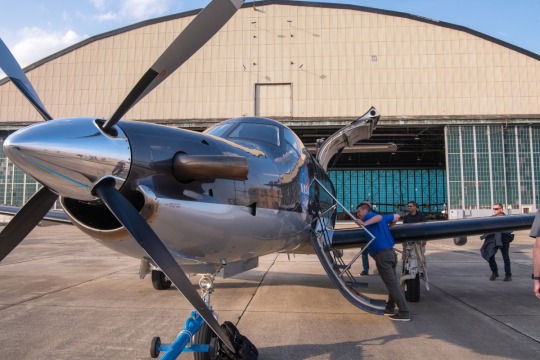
View On WordPress
#Airbus#Aircraft#Airliner#Aviation#Cleveland#Europe#NASA Glenn Research Center#Pilatus PC-12#Turboprop#United States
0 notes
Text

"Control room of reactor building at NASA Plum Brook Station. Sandusky, Ohio." NASA/Glenn Research Center. 1959.
Internet Archive
273 notes
·
View notes
Text
Imagine one day a new social trend starts spreading. It’s something unbelievably dumb. Not harmful per de, but truly silly to believe. Let’s say, I dunno, healing crystals start going mainstream. Everybody’s talking about their crystals. It becomes impolite to criticize people who believe in healing crystals. They become a big part of people’s personalities, and people on TV start talking about them, and one day years down the line politicians are debating funding for crystal-based medicine. And through it all you are sitting there going, what the fuck is happening. I thought we were all on the same page on this. You want to get along and be friendly and open minded but you cannot pretend to believe in healing crystals, this is nonsense, and when the topic comes up you refuse to lie about it. This eventually starts to have social consequences—they’re that popular!—but what can you do? You cannot pretend a lump of quartz can cure the flu or whatever. It’s just all so unbearably embarrassing.
I think what the centrist/liberal/center-left reactionary turn driven by culture war stuff feels like. And I think the key emotion is probably cringe. Not hate, not fear, though those emotions may reinforce the turn. I think in a lot of cases people who imagine themselves pretty open minded and flexible have as part of their worldview something they thought was bedrock social consensus—on the level of “healing crystals are silly woo”—so bedrock maybe that it didn’t even need to be a conceptual boundary they actually policed in their minds.
For instance, when she started her anti-trans turn, JK Rowling made a big show of not being really anti trans, just arguing that Some People Had Gone Too Far. She wasn’t a frothing religious reactionary, after all. And I believe that’s probably true! I think Rowling probably did have a mental model of sex and gender with a little bit of give in it—of the “we can humor the odd weirdo” type. But as the discussion of trans rights in the UK got more serious over her lifetime, trans people went from “the odd weirdo” to “a recognized minority,” and eventually this ran against a bedrock belief that on some level men are men and women are women and never the twain shall meet. To act otherwise was just too embarrassing. And she wasn’t going to embarrass herself in the name of political correctness.
Other people whose brains have been eaten by the anti-woke mind virus (as @eightyonekilograms calls it) have something going of the contrarian in them, who enjoys yelling “up yours, woke moralists!” or w/e. Im thinking of ppl like Glenn Greenwald here, or Dave Chapelle, people who seem not to feel alive except when people are mad at them. That’s a separate but interesting dynamic. And there are people like Graham Linehan who become totally unhinged through this process of auto-radicalization, moths drawn ever closer to a particular source of validation within their chosen reactionary subcommunity, until they are truly parodies of themselves. That is also an important dynamic, but it’s one that only takes hold after the initial turn has begun.
I think the role of that feeling of cringe, that refusal to entertain an idea because it is too embarrassing (even if it does actually have a decent body of research behind it, unlike crystals) is important to think about, because I am interested in how to get people over it. I know that feeling has affected my own thinking over my lifetime. I wasn’t raised particularly conservative, but I had to learn not to cringe at a lot of feminist thought before I could appreciate it and learn from it. I explicitly didn’t have that cringe when it came to gay people for whatever reason, so it never entered my mind that it might be a problem. I remember being surprised to learn when I was very young that some boys wanted to marry other boys, but my response was “huh. Go figure.” Because for whatever reason I had not picked up that this was something I was supposed to be grossed out by. A general doctrine of empathy, of trying to understand people on their own terms, can help forestall some of this stuff, but it’s not foolproof in either direction—I don’t want to believe crystals have healing powers if it becomes socially popular to do so, just because it is socially popular to do so! And if they do, I don’t want to not believe they do just because it is socially unpopular!
(Obviously the crystals thing is not a one to one metaphor for the trans thing, so don’t read too much into that. Maybe astrology would have been a better analogy. Also I’m not talking just about people whose reactionary turn is predicated on trans issues—I think this dynamic applies to everything from gay rights to the Tridentine Mass. But trans issues are a handy example bc, as the adage goes, somebody posts once about trans people and they never post anything normal again. I think the classic rapid-onset trans derangement syndrome is closely tied to the fact that gender norms are a really deep element of many people’s social-consensus-based worldview, and so challenged to that worldview are felt as really cringe.)
I’m curious if other people who grew more liberal in their thinking over time had a similar experience of having to overcome what was basically a feeling of embarrassment at certain ideas.
373 notes
·
View notes
Text

Oval Office Vulcan salute - President Obama and Nichelle Nichols. Photo by Pete Souza. Obama Library, NARA ID 200283671.
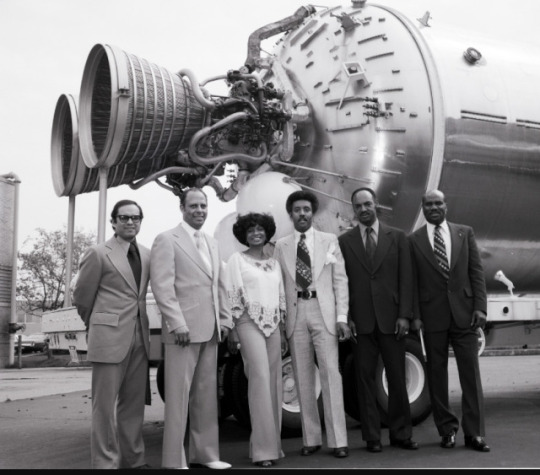
Nichelle Nichols at NASA's Glenn Research Center, 4/20/1977, NARA ID 17468123.
#RIP Nichelle Nichols
Star Trek's Lt. Uhura goes to the final frontier
By Miriam Kleiman, Public Affairs
youtube
Nichelle Nichols - NASA Recruitment Film 1977.
“Last night, my mother, Nichelle Nichols, succumbed to natural causes and passed away. Her light however, like the ancient galaxies now being seen for the first time, will remain for us and future generations to enjoy, learn from, and draw inspiration. Hers was a life well lived and as such a model for us all." Statement from Nichols’ son, Kyle Johnson
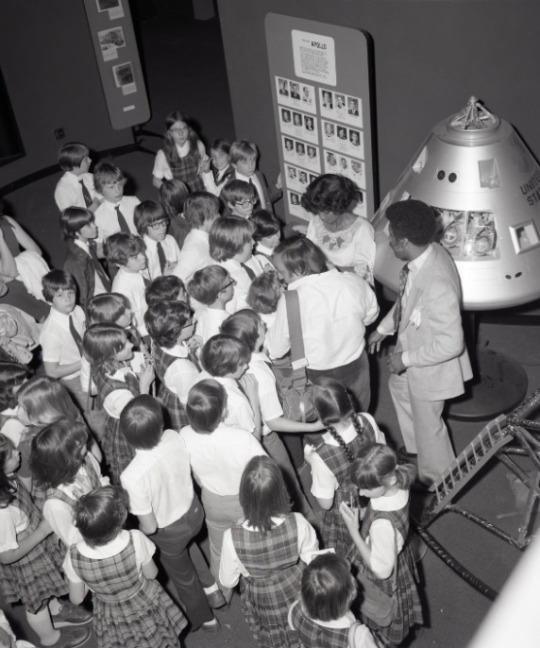
Nichols with adoring fans at NASA's Glenn Research Center, 4/20/1977, NARA ID 17468124 .
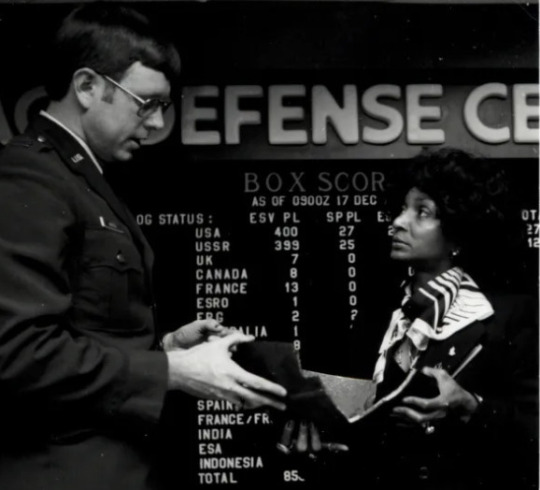
Nichelle Nichols holds a piece of a satellite presented by Capt. David Martin at NORAD, 1/6/1977, RG 342. Online here.
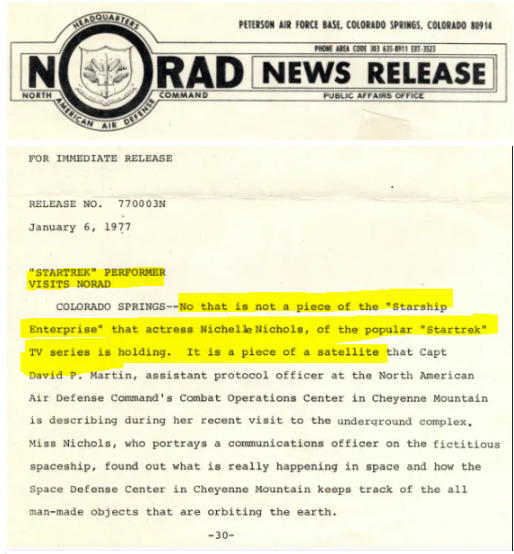
NORAD press release 1/6/1977, RG 342, Records of US Air Force, online.
More online:
In Memoriam: Nichelle Nichols (1932-2022), National Archives News.
To Boldly Go Where No (Wo)Man Has Gone Before… by Archives Specialist Netisha Currie.
Nichelle Nichols Helped NASA Break Boundaries on Earth and in Space, NASA.gov
Mae Carol Jemison- The First African American Woman in Space, Pieces of History by Dena Lombardo.
Space Exploration - NASA Records at the National Archives
#nasa#stem#blm#representation matters#star trek#i love star trek#women in stem#black women in stem#rip nichelle#rip nichelle nichols#obama#obama library#rip#black women rock#black history#african american history#rediscoveringblackhistory#norad#greatwomen#nichelle nichols
3K notes
·
View notes
Text
HOW FAST DOES LIGHT TRAVEL??
Blog#395
Wednesday, April 24th, 2024.
Welcome back,
The speed of light traveling through a vacuum is exactly 299,792,458 meters (983,571,056 feet) per second. That's about 186,282 miles per second — a universal constant known in equations as "c," or light speed.
According to physicist Albert Einstein's theory of special relativity, on which much of modern physics is based, nothing in the universe can travel faster than light.

The theory states that as matter approaches the speed of light, the matter's mass becomes infinite. That means the speed of light functions as a speed limit on the whole universe. The speed of light is so immutable that, according to the U.S. National Institute of Standards and Technology, it is used to define international standard measurements like the meter (and by extension, the mile, the foot and the inch).

Through some crafty equations, it also helps define the kilogram and the temperature unit Kelvin.
But despite the speed of light's reputation as a universal constant, scientists and science fiction writers alike spend time contemplating faster-than-light travel. So far no one's been able to demonstrate a real warp drive, but that hasn't slowed our collective hurtle toward new stories, new inventions and new realms of physics.
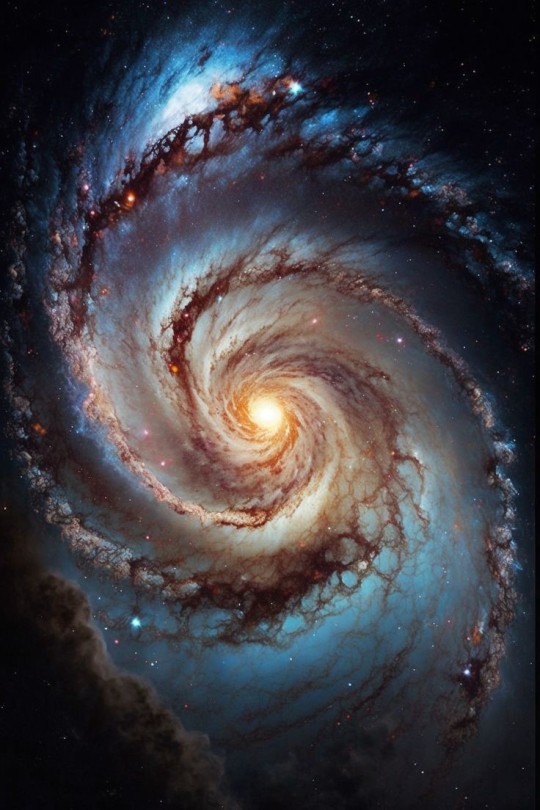
A light-year is the distance that light can travel in one year — about 6 trillion miles (10 trillion kilometers). It's one way that astronomers and physicists measure immense distances across our universe.
Light travels from the moon to our eyes in about 1 second, which means the moon is about 1 light-second away. Sunlight takes about 8 minutes to reach our eyes, so the sun is about 8 light minutes away. Light from Alpha Centauri, which is the nearest star system to our own, requires roughly 4.3 years to get here, so Alpha Centauri is 4.3 light-years away.

"To obtain an idea of the size of a light-year, take the circumference of the Earth (24,900 miles), lay it out in a straight line, multiply the length of the line by 7.5 (the corresponding distance is one light-second), then place 31.6 million similar lines end to end," NASA's Glenn Research Center says on its website. "The resulting distance is almost 6 trillion (6,000,000,000,000) miles!"

Stars and other objects beyond our solar system lie anywhere from a few light-years to a few billion light-years away. And everything astronomers "see" in the distant universe is literally history. When astronomers study objects that are far away, they are seeing light that shows the objects as they existed at the time that light left them.
Originally published on https://www.space.com
COMING UP!!
(Saturday, April 27th, 2024)
"HOW WAS OUR SOLAR SYSTEM CREATED??"
#astronomy#outer space#alternate universe#astrophysics#universe#spacecraft#white universe#space#parallel universe#astrophotography
64 notes
·
View notes
Text
NASA Photographers Share Their #NASAMoonSnap
We’re getting ready to launch Artemis I, the first test flight of the rocket and spacecraft that will take future astronauts to the Moon! As we prepare for the lunar voyage of the Space Launch System (SLS) rocket and Orion spacecraft launching as early as Aug. 29, 2022, we would like you to share your excitement with us. Share all types of Moon-inspired content with us with the hashtag #NASAMoonSnap, and we will choose some entries to share on our social media platforms and during the launch broadcast. Get creative! We’re looking for Moon paintings, Moon poetry, Moon pottery, Moon latte foam art — the sky is not the limit.
Since we have the full Moon coming up on Aug. 11, we wanted to share our handy dandy Moon photography guide and inspire you with some of our NASA imagery experts’ stories on capturing the Moon.

"The first rollout of the SLS rocket with the Orion spacecraft aboard was a really exciting moment to capture. I was photographing at Kennedy Space Center in an area where many of the employees that had worked on different parts of the SLS were watching. It was so great to hear some of their stories and see their pride in helping to build this amazing rocket and spacecraft. Once the mobile launcher with SLS passed the crowds to head toward the launchpad, people began to line up in their cars to leave. I decided to stick around and try to get a closer image of the Moon with SLS. It was fairly dark by the time I made this image, so there isn’t any detail in the moon, but it’s still moving to see them next to one another and know that SLS will be closer to the Moon than Earth very soon, and will one day enable humans to land on the lunar surface again!" — Aubrey Gemignani, NASA contract Photo Archivist/Photographer, NASA Headquarters
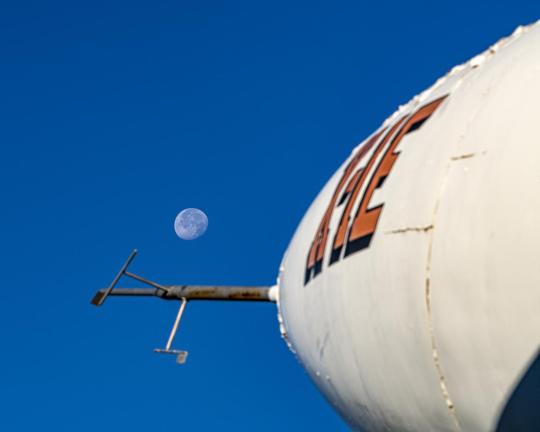
“I set up this shot when I saw the Moon was lined up perfectly with the X-1E in front of the main entrance to Armstrong Flight Research Center one morning last year. What captured my eye about this scene was that it showcased the past and the future of NASA in one image. The X-1 was a key piece of early NACA/NASA history, and it is pointing to the Moon showing us where we are going next with Artemis. I still remember walking around on my first day at NASA and seeing all the places where history was made. I was in awe as I walked these hallowed grounds. I know that there is still a great deal of history to be written here as we strive to go higher, further and faster and I’m glad that I get to be here to document it.” — Joshua Fisher, Photographer, NASA’s Armstrong Flight Research Center
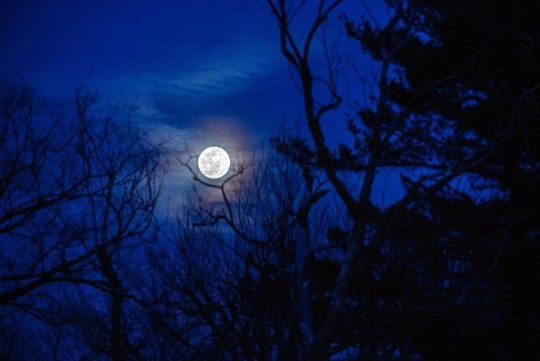
“While out capturing images of the Moon, the memories of my first day as a photographer for NASA came flooding back. One of my first memories is going to the exhibits department and getting to hold an actual Moon rock sample. That day changed my perception of the Moon forever. That moment made the Moon more than just something in the sky. It became tangible and real, and my part in all of this became clear. The honor and privilege I feel everyday is overwhelming.” — Jef Janis, Still Imaging Specialist, NASA’s Glenn Research Center
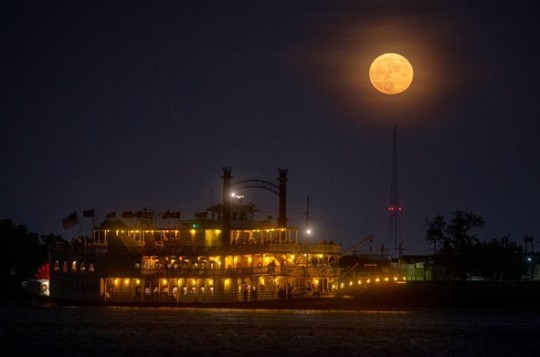
“When I can, I like my Moon photos to have a sense of place. The trick is finding a shooting position and a landmark that will fit in with the Moon’s very stringent plans for rising. I went out to shoot the Sturgeon Moon, which was also a rare blue moon, last August. As I was shooting the moonrise from the riverbank in downtown New Orleans, I was lucky to have one of the city’s iconic riverboats turn a bend and head upriver to pass beneath the Moon. Happily the river was low and I was able to scramble down the high bank to reduce the vertical distance between the quickly rising moon and the slowly passing riverboat.” — Michael DeMocker, Photographer, NASA’s Michoud Assembly Facility
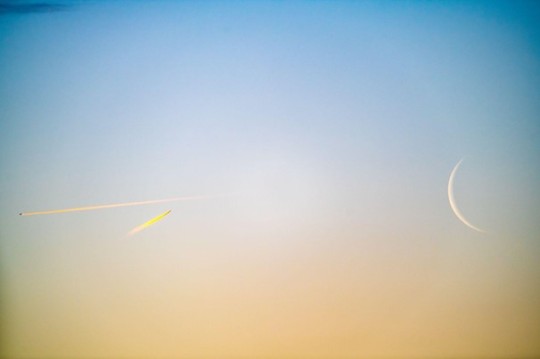
“I was excited to try to capture a waning crescent Moon at dawn, even though it was late February, 20 degrees Fahrenheit and 6:30 in the morning…Nonetheless, I decided to photograph on-site at Lewis Field, and ended up using my telephoto lens to really zoom in on the Moon. In a race against the sunrise and the Moon disappearing, I was able to capture a cool shot of the Moon with a couple planes making an appearance as well (The Cleveland Hopkins Airport is right next door). Although is it me, or does one of the planes look like a rocket taking off…?” — Jordan Salkin, Scientific Imaging Specialist, NASA’s Glenn Research Center
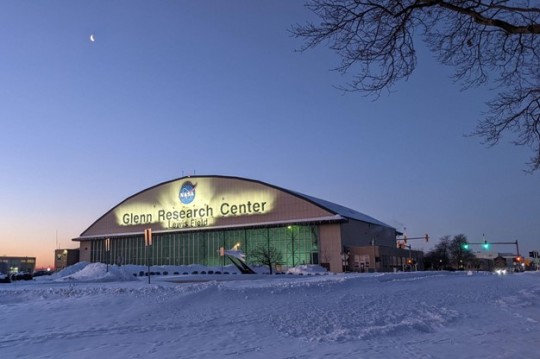
“I have worked at NASA’s Glenn Research Center since 1990 and have enjoyed every second doing what I do to support NASA’s mission. On my first day back to work onsite after 22 months of telework I saw this beautiful sunrise with the snow, the Moon, and the hangar. It felt good to be at work seeing the landscape I was so used to seeing. I had to take these pictures to share with my colleagues. ” — Jeffrey F. Abbott, Media Support Specialist, NASA’s Glenn Research Center
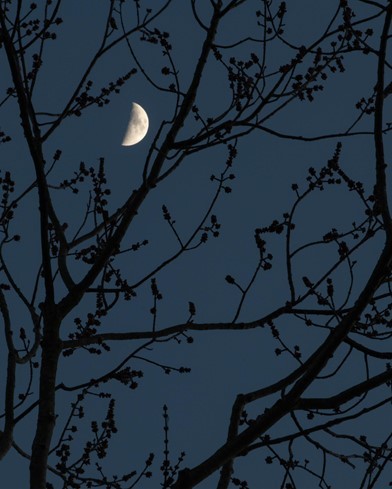
“In creating this Moon image, I almost felt pressured to find the ‘perfect location.’ The more that I thought about that prospect, the more I was drawn to using only natural elements, in my own environment. I wanted to find an image in my own backyard. This image was captured just as the Sun dropped below the horizon. I had a very short window of time when these colors would be possible. Two minutes earlier or later would have produced a totally different image. The almost abstract lines of a Maple tree in the earliest stages of budding seemed to be in concert with the waxing crescent Moon, both preparing for full bloom. Nature on display in its simplicity.” — Marvin Smith, Still Imaging Specialist Lead, NASA’s Glenn Research Center
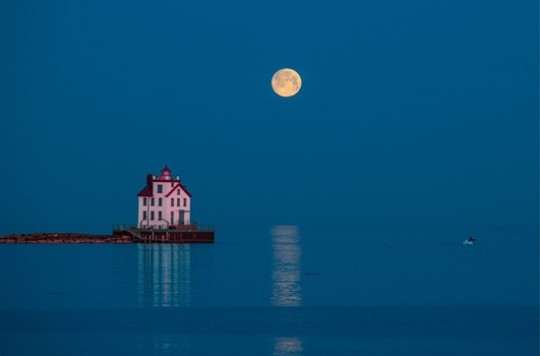
“The lighthouse in Lorain, Ohio, has been photographed by amateur and professional photographers for decades, but I have never photographed it before. When I calculated that the path of the Moon was going to go over and past the lighthouse with a reflection over the water, I decided to give it a try. I encountered four other photographers on the same pier with me that early morning. They were huddled in the middle of the pier and I was at the end. I think I got the best photo.” — Quentin Schwinn, Scientific Photographer, NASA’s Glenn Research Center
Make sure to follow us on Tumblr for your regular dose of space!
#NASA#NASA MoonSnap#Moon#Moon photography#space photography#Artemis#mega Moon rocket#photography#full Moon#lunar#Orion#Space Launch System#space#astronomy#nature photography
1K notes
·
View notes
Text

Advanced Space Transportation Program (ASTP)
"This is a computer generated image of a Shuttle launch utilizing 2nd generation Reusable Launch Vehicle (RLV) flyback boosters, a futuristic concept that is currently undergoing study by NASA's Space Launch Initiative (SLI) Propulsion Office, managed by the Marshall Space Fight Center in Huntsville, Alabama, working in conjunction with the Agency's Glenn Research Center in Cleveland, Ohio. Currently, after providing thrust to the Space Shuttle, the solid rocket boosters are parachuted into the sea and are retrieved for reuse. The SLI is considering vehicle concepts that would fly first-stage boosters back to a designated landing site after separation from the orbital vehicle. These flyback boosters would be powered by several jet engines integrated into the booster capable of providing over 100,000 pounds of thrust. The study will determine the requirements for the engines, identify risk mitigation activities, and identify costs associated with risk mitigation and jet engine development and production, as well as determine candidate jet engine options to pursue for the flyback."
Date: April 3, 2000
NASA ID: 0001720
#Space Shuttle#Orbiter#NASA#Space Shuttle Program#Advanced Space Transportation Program#ASTP#Cancelled#concept art#April#2000#my post
82 notes
·
View notes
Text



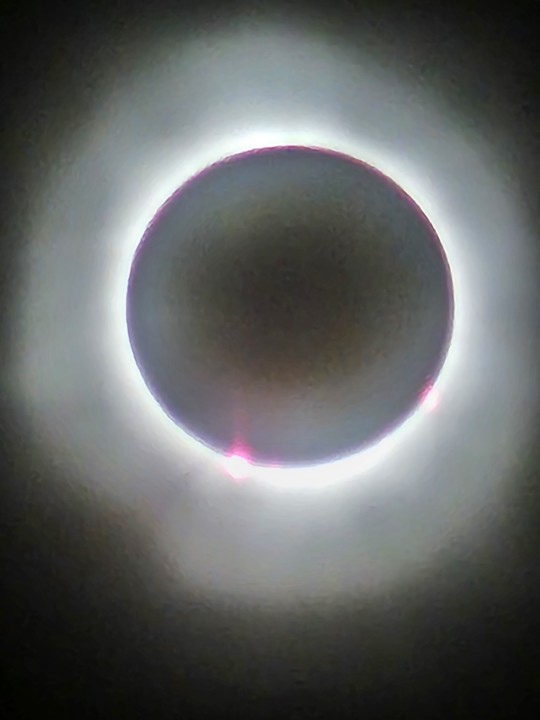

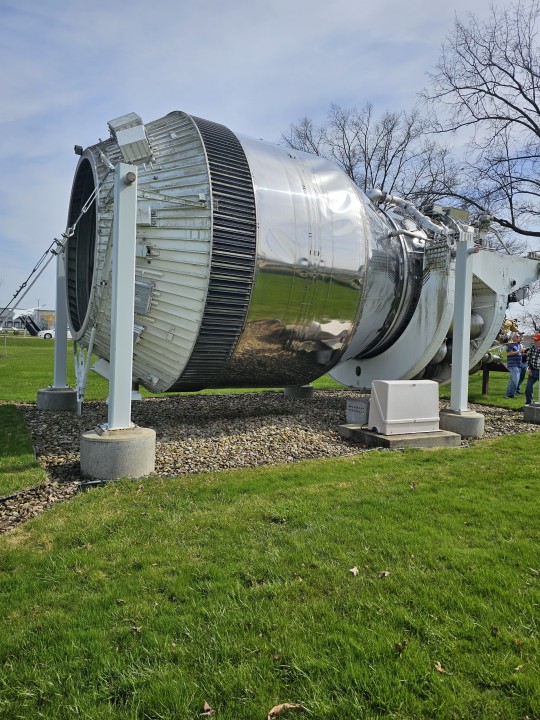

Just enjoying the eclipse from the NASA Glenn Research Center, Cleveland
#me#my pics#it helps to have friends with connections#nerding out and getting to witness a bomb ass celestial event#perfect day#AND i actually remembered to wear sunscreen so i didnt get burned!#Spotify
19 notes
·
View notes
Text
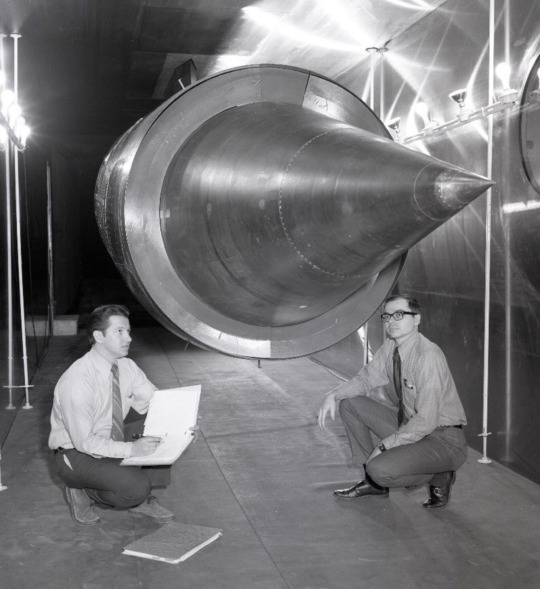
Bobby Sanders (left) and Robert Coltrin check a full-scale YF-12 flight inlet prior to a February 1972 test run in the NASA Lewis Research Center (now NASA Glenn) 10×10 Supersonic Wind Tunnel. Although the 5-foot 9-inch diameter inlet was large for the test section, no problems arose
Credit: NASA/Martin Brown
A host of military aircraft capable of reaching supersonic speeds followed the Bell X-1. In the 1960s, Lockheed’s family of Blackbirds (the original A-12, the YF-12 interceptor, and the SR-71 reconnaissance vehicle) became the world’s first aircraft able to cruise at supersonic speeds for extended periods. However, the expansion of this capability to larger transport aircraft was difficult, in large part due to the lack of data collected about propulsion systems during longer supersonic flights.
To solve problems that weren’t found during design-phase testing of these aircraft and to advance crucial technology, like the supersonic mixed-compression inlet, the military loaned two retired YF-12s to the Dryden Flight Research Center (today, NASA Armstrong) in 1969 as part of a collaborative NASA/Air Force effort. They planned to compare data from YF-12 flights to data collected in wind tunnels at NASA’s Ames, Langley, and Lewis Research Centers
Lewis’ researchers had studied supersonic inlets in wind tunnels since the early 1950s and were in the midst of an extensive evaluation of supersonic nozzles and inlets using an F-106 Delta Dart. In this new effort, Lewis was responsible for testing a full-scale YF-12 inlet in the center’s 10×10 Supersonic Wind Tunnel and analyzing a 32,500-pound thrust Pratt & Whitney J58 engine in the Propulsion Systems Laboratory (PSL).
Although mixed-compression inlets, which allowed the engines to operate as turbojets at subsonic speeds and as ramjets at higher Mach numbers, were highly efficient, their design left the engines vulnerable to flow disturbances that often caused “unstarts.” Unstarts produced instantaneous drag that could stall the engine or cause the aircraft to quickly roll or yaw.
Lewis researchers tested an actual inlet from a crashed SR-71, which they installed into the 10×10 in November 1971.
Over the next year, researchers collected aerodynamic data under different conditions in the wind tunnel. They also tested a new inlet control system patented by Lewis engineers Bobby Sanders and Glenn Mitchell that used mechanical valves to protect the aircraft against unstarts. It was the first time the system was tested on a full-scale piece of hardware.
Researchers also studied the relationships between the airframe, inlet, engine, and control system during normal flight conditions and when experiencing realistic flow disturbances..
Here’s the full article nasa.gov/centers-and-fa…
@Habubrats71 via X
15 notes
·
View notes